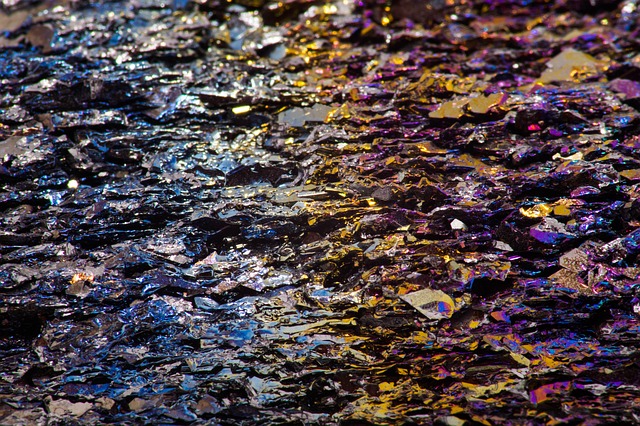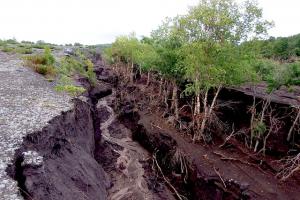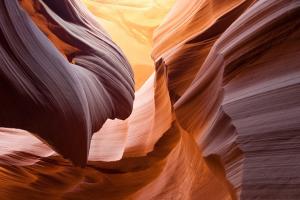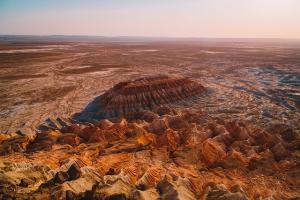Rock Forming Minerals

Rock Forming Minerals
Rock-forming minerals are minerals that make up the majority of rocks in the Earth's crust. They are the most common and important minerals found in igneous, metamorphic, and sedimentary rocks. Some of the most common rock-forming minerals include:
1. Feldspars:
Feldspar is a group of minerals that are composed of aluminum, silicon, and oxygen. They are the second most abundant minerals in the Earth's crust and are found in many types of rocks, including granite, gneiss, and syenite. There are two types of Feldpars.
- Orthoclase feldspars contain potassium (KalSi3O8) and usually range from white to pink.
- Plagioclase feldspars contain sodium (KalSi3O8), calcium (CaAl2Si2O8), or both, and range from white to gray to black. Feldspars have moderate hardness.
2. Quartz:
Quartz is a mineral that is composed of silicon and oxygen. It is the most abundant mineral in the Earth's crust and is found in many types of rocks, including granite, sandstone, and quartzite. Quartz is also a very common ingredient in many kinds of rock. It is silicate (SiO2) and usually has a translucent to milky white color. The luster is vitreous. Quartz is harder than most minerals (hardness 7) and thus is very resistant to weathering. Chert is a type of quartz sometimes found in sedimentary rocks. It can cause problems when used as concrete aggregate.
3. Mica:
Mica is a group of minerals that are composed of aluminum, potassium, silicon, and oxygen. They are common in many types of rocks, including granite, gneiss, and schist. These are Translucent thin sheets or flakes and have two common varieties:
- Muscovite is potassium aluminum silicate of colorless or silvery tint, pearly luster, and especially one very perfect cleavage which permits the mineral to be split into thin elastic sheets that when bent spring back to shape.
- Biotite, the other common variety, is a complex silicate of potassium, magnesium and iron, and aluminum.
Biotite and muscovite are similar in physical properties. Both are soft, 2.5-3, with one perfect cleavage. The sheets of mica have a very low coefficient of friction, which can produce shear failure in certain rocks, such as schist.
4. Ferromagnesian minerals:
A class of minerals, all of which contain both iron and magnesium. This class includes pyroxene, amphibole, hornblende, and olivine. These minerals are dark in color and have moderate hardness.
- Pyroxene is a group of minerals that are composed of calcium, magnesium, iron, and silicon. They are common in many types of rocks, including basalt, gabbro, and peridotite.
- Amphibole is a group of minerals that are composed of calcium, magnesium, iron, aluminum, silicon, and oxygen. They are common in many types of rocks, including basalt, gabbro, and schist.
- Olivine is a mineral that is composed of magnesium, iron, and silicon. It is common in many types of rocks, including basalt and peridotite.
5. Calcite:
Calcite is a mineral that is composed of calcium, carbon, and oxygen. It is common in many types of rocks, including limestone and marble. A mineral made of calcium carbonate (CaCO3). It is usually white, pink, or gray. It is soluble in water and thus can be transported by groundwater into cracks in rock where it precipitates out of solution. It also can precipitate in soil, becoming a cementing agent. Calcite is much softer than quartz or feldspar. The hardness is 3. Calcites have a vigorous reaction to hydrochloric acid.
6. Dolomite:
Similar to calcite with magnesium added. Less vigorous reaction to dilute hydrochloric acid.
7. Iron Oxides:
Another class of minerals, all of which contain iron (FeO3). The most common iron oxides are hematite, Fe2O3; hydrous iron oxides which are often called limonite and magnetite. Although less common, these minerals give a distinctive rusty color to some rocks and soils and can act as cementing agents. The compact varieties have a hardness of 5.5-6, but earthy forms are soft. The luster is sub-metallic.
8. Gypsum:
Soft minerals often occur as a precipitate in sedimentary rocks. It is colorless to white and has economic value when found in thick deposits. For example, it is used to make drywall. Gypsum is water soluble and thus can dissolve under the action of groundwater, which can lead to other problems.
These are just a few examples of the many rock forming minerals that exist in the Earth's crust. Other important rock-forming minerals include garnet, tourmaline, zeolite, and many others.







